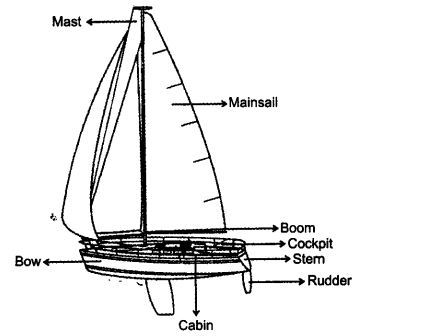Chapter 1 - Political Theory: An Introduction
Question 1:
Which of the following statements are true/false about Political theory?
(a) It discusses ideas that form the basis of political institutions.
(b) It explains the relationship between different religions.
(c) It explains the meanings of concepts like equality and freedom.
(d) It predicts the performance of political parties.
Answer:
(a) True
(b) False
(c) True
(d) False
Question 2:
Politics is more than what politicians do. Do you agree with this statement? Give examples.
Answer:
It is correct that politics is more than what politicians do. Politicians as a part of government are involved in politics but politics is not limited to their activities. Politics involves number of various negotiations that go on in society through which collective decisions are made.
Politics involves the actions of government and its relation to the aspirations of the people.
Politics involves the struggle of people and its influence on decision making.
People are engaged in political activity whenever they negotiate with each other and participate in collective activities that are designed to promote social development and resolve common problems.
For example, residents of localities form associations to solve their common problems and raise these issues at higher level.
Students form unions in colleges and universities to debate and resolve issues that affect the majority of them.
Thus, politics is involved in the sphere of life that is related to power, collective decision-making and solving common problems.
Question 3:
Vigilant citizens are a must for the successful working of a democracy. Comment.
Answer:
Vigilant people are a must for the successful working of a democracy as vigilance creates awareness about the rights of citizens and government policies that affect daily life.
Awareness leads to discussion and debate on the issues that arise out of the implementation of policies.
Citizens can, thus, force the government to implement new policies or modify the existing policies and programmes of the country by building up and mobilising their opinion.
As democracy is about government of the citizens, by the citizens and for the citizens, vigilance of the citizens accelerates the successful working of a democracy.
Question 4:
In what ways is the study of political theory useful for us? Identify four ways in which the political theory can be useful to us.
Answer:
Political theory is useful for us as it helps in understanding the meaning of political concepts by looking at the way they are understood and used in ordinary language.
Political theories debate and examine the various meanings and opinions from different contexts in a systematic manner.
The four ways in which the political theory can be useful to us, are:
It helps in understanding how constitutions are shaped in a certain manner, how governments and social lives are arranged in a certain systematic manner by studying and understanding the ideas and principles that are at their base.
It shows the significance of various principles such as rule of law, separation of power, judicial review etc.
Political theory helps bureaucrats, politicians, government officers and advocates to interpret the laws and constitution. It also helps in understanding the problems of society and explore the ways to solve them.
Political theory encourages individuals to examine their ideas and feelings about political things so that they can become moderate in their ideas and feelings.
Question 5:
Do you think that a good/ convincing argument can compel others to listen to you?
Answer:
Yes, a good/ convincing argument can compel others to listen to one. Arguments prove the degree of reason of a proposition and the need to defend it. A good defence is a compelling factor in the audience listening to the speaker. The knowledge of political theory enables the individual to think systematically on issues like justice and freedom and polish his/her opinion. This helps the presentation of argument in an informed manner. A wise opinion is convincing and is for the sake of common interests. Therefore, it makes others listen to and agree with the individual who argues in a convincing manner.
Question 6:
Do you think studying political theory is like studying mathematics? Give reasons for your answer.
Answer:
Studying political theory is not like studying mathematics as mathematics deals with precise concepts and patterns while political theory studies human beings and their ideas in the context of power and decision-making. In mathematics, there are single definitions of terms. In political theory, on the other hand, the definitions of terms vary according to the context. This is because the opinion of people changes unlike objects and carries different meanings of a single term in different contexts. The concepts that are dealt by mathematics are constant and derived through formulae whereas the concepts of political theory are at variance and open to interpretation.






